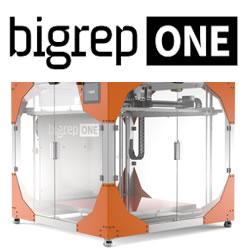Inventory shrinkage is a common issue in most businesses that deal with physical inventory. But how does it happen, what are its consequences, and how to prevent it?
 Inventory Shrinkage – Causes, Consequences, and Tips
Inventory Shrinkage – Causes, Consequences, and Tips

Article from | MRPeasy
What is inventory shrinkage?
Inventory shrinkage occurs when the actual quantities in your inventory are smaller than what is recorded in your books or inventory management system. This usually happens due to a combination of factors, including administrative errors, damage, spoilage, theft, and supplier fraud.
According to a Statista report, more than 64% of US retail businesses experienced a yearly inventory shrinkage rate of more than 1% of their total inventory value. And no type of business that deals with physical inventory is immune to shrinkage.
How to calculate inventory shrinkage?
To calculate the inventory shrinkage value, use the following formula:
Shrinkage Value = Inventory Value Record – Physical Inventory Value
Let’s say $80,000 is marked as the company’s inventory value in their accounting records. After an inventory count, the real physical inventory value was calculated to be $78,000. This means the shrinkage value was:
$80,000 - $78,000 = $2,000
Therefore, the company lost $2,000 worth of inventory during the period, constituting 2.5% of the total value.
Causes of inventory shrinkage
Inventory shrinkage can be caused by many factors that usually work in combination with one another:
- Damage. Damage to inventory items can occur during various stages of the supply chain, from handling in the warehouse to transportation.
- Spoilage. Products with expiration dates can go bad before being sold, leading to a loss of inventory.
- Production errors. Mistakes in the production process may cause scrapped materials or defective products that need to be written off.
- Employee theft. Internal theft is a significant contributor to inventory shrinkage.
- Shoplifting. Shoplifting by external parties is an extremely common cause of shrinkage in retail environments.
- Vendor fraud. Vendor fraud occurs when suppliers manipulate orders or invoices, providing fewer items than what was agreed upon or charging higher prices.
- Inventory miscounting. Errors in counting inventory during physical inventory counts or cycle counting can lead to inaccuracies in recorded inventory levels.
- Administrative errors. Administrative errors in inventory accounting, such as data entry mistakes, can create discrepancies between actual inventory and recorded amounts.
Each of those types of inventory shrinkage can lead to a number of consequences, including financial loss, unexpected stockouts and operational disruptions, reputational damage, and overstocking when trying to compensate for potential shrinkage.
Tips for minimizing inventory shrinkage
Conduct regular inventory audits
Regular inventory audits involve physically counting and verifying the actual amount of inventory on hand against what is recorded in your records. These audits help identify discrepancies, enabling you to take corrective actions. Implementing a schedule for these audits, such as monthly or quarterly, ensures that you stay on top of inventory accuracy.
Train employees
Training should cover various aspects, including proper inventory handling to prevent damage, understanding production processes to avoid overproduction or errors, accurate data entry to maintain inventory records, and adherence to First Expired, First Out (FEFO) principles for perishable goods. Well-trained staff can drastically reduce human errors that contribute to inventory shrinkage.
Implement security measures
Implementing security measures is vital to prevent both internal and external theft. Internal theft, such as employee theft, can be deterred with security systems like surveillance cameras, security personnel, and access control measures. These not only act as deterrents but also provide evidence in case of suspicious activities.
Conduct vendor audits
Vendor audits involve verifying that the products received match the purchase order, both in terms of quantity and quality. They also ensure that the agreed-upon pricing and terms are adhered to. Maintaining strong supplier relationships and transparent communication can help reduce the risk of fraud.
Implement inventory management software
Manufacturing inventory management software offers real-time tracking of inventory levels, automates inventory control tasks, and provides insights into inventory turnover. It streamlines the entire inventory management process, from creating purchase orders and receiving goods to tracking inventory movements and sales.
Barcode scanning capabilities make data entry more efficient and accurate, reducing the risk of errors that contribute to shrinkage. Inventory management software also offers detailed reporting and analytics, helping you identify trends and anomalies that may indicate potential shrinkage issues, allowing for proactive measures to be taken.
Overall, implementing such software increases efficiency, accuracy, and visibility in managing inventory, contributing to shrinkage prevention and minimization efforts.
This article has been redacted from https://www.mrpeasy.com/blog/inventory-shrinkage/
The content & opinions in this article are the author’s and do not necessarily represent the views of ManufacturingTomorrow

MRPeasy
MRPeasy is a seriously powerful and easy to use ERP software for small manufacturers that gives you everything you need to manage your manufacturing and distribution processes. Integrating sales, procurement, inventory, production, finances, and your team, it provides you with an accurate real-time overview of your operations. MRPeasy is trusted by 1800+ small manufacturers worldwide, 700+ of which are based in the US and Canada. Our users report a 54% average improvement in the overall performance of their business and a 42% increase in on-time deliveries. Try for free, no credit card needed.
Other Articles
BOM Management Expert Guide for Growing Manufacturers
Scottish Chemical Manufacturer ‘Struck Gold’ with Manufacturing ERP Software
5 Most Common Small Manufacturing Challenges According to Consultants
More about MRPeasy
Comments (0)
This post does not have any comments. Be the first to leave a comment below.
Featured Product


.png)